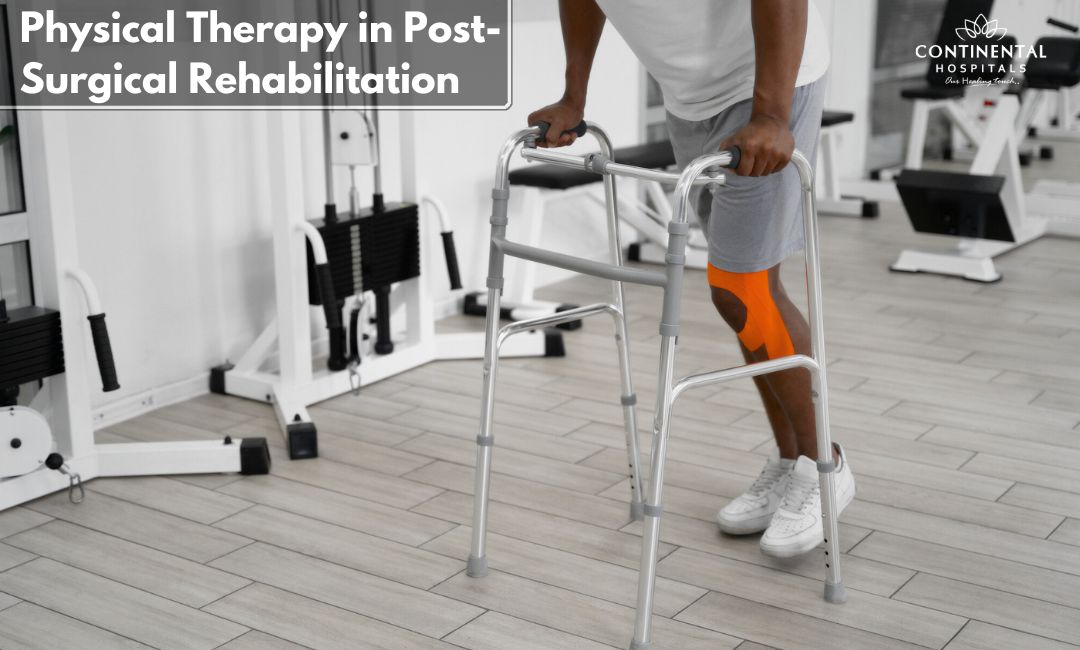After surgery, the road to recovery can feel long and daunting. Many patients often wonder how long it will take to get back to their normal activities and when they can resume their daily lives. One essential factor in this journey is physical therapy. Physiotherapy plays a vital role in helping individuals regain their strength, improve their mobility, and manage pain after surgery. In this blog, we will explore the significance of physical therapy in post-surgical rehabilitation, its methods, and the positive impact it has on patient outcomes.
Understanding Post-Surgical Rehabilitation
Post-surgical rehabilitation refers to the process of recovering after a surgical procedure. This process can vary significantly depending on the type of surgery, the patient’s overall health, and any pre-existing conditions. Rehabilitation is designed to help patients return to their previous level of function while minimizing complications and promoting healing.
Physical therapy is often an integral part of this rehabilitation process. It involves a range of techniques and exercises tailored to each individual’s needs. By focusing on physical recovery, therapists can help patients overcome challenges and achieve their recovery goals.
The Importance of Physical Therapy
1. Restoring Strength and Mobility
One of the primary goals of physical therapy after surgery is to restore strength and mobility. Surgical procedures can lead to muscle weakness and stiffness due to prolonged inactivity. Physical therapists design personalized exercise programs that focus on gradually rebuilding strength in the affected areas. These exercises are essential for restoring normal movement patterns, enhancing coordination, and preventing stiffness.
🥗 Healthy Plate Challenge
🍽 Add Your Favorite Dish
Pick Your 6 favorite foods, eat, and see the results.Drag & drop foods onto your plate.
Drop Food Here
For example, after knee surgery, a physical therapist may start with gentle range-of-motion exercises to help patients bend and straighten their knees. As the patient progresses, the therapist may introduce strengthening exercises, such as leg lifts and squats, to help rebuild muscle strength.
2. Managing Pain and Discomfort
Surgery often comes with pain and discomfort, which can hinder the recovery process. Physical therapists are trained to use various techniques to help manage pain effectively. These methods may include:
- Manual Therapy: Hands-on techniques that manipulate muscles and joints to relieve tension and improve circulation.
- Modalities: Treatments like heat, ice, ultrasound, or electrical stimulation can help reduce pain and inflammation.
- Exercise: Engaging in gentle movement can stimulate blood flow, promote healing, and alleviate discomfort.
By addressing pain early on, physical therapy can help patients feel more comfortable and motivated to participate in their rehabilitation exercises.
3. Preventing Complications
Surgery carries risks of complications such as blood clots, infections, and impaired mobility. Physical therapists play a crucial role in preventing these complications through education and targeted exercises. For instance, they may teach patients how to perform deep breathing exercises to reduce the risk of respiratory issues after abdominal surgery.
Additionally, therapists help patients gradually increase their activity levels, which can prevent the loss of muscle mass and strength. By encouraging movement, physical therapy promotes circulation, reduces the likelihood of complications, and fosters overall well-being.
4. Enhancing Recovery Speed
Research shows that patients who engage in physical therapy post-surgery often experience faster recovery times than those who do not. Engaging in regular physical activity, even at a gentle level, can speed up the healing process.
For example, studies have shown that individuals who participate in physical therapy after hip replacement surgery regain their mobility and strength quicker than those who solely rely on rest. The structured approach of physical therapy, with its focus on gradual progression, helps patients return to their daily lives sooner.
5. Improving Quality of Life
The ultimate goal of physical therapy is not just to heal physically but also to improve the overall quality of life. Many patients experience emotional and psychological challenges during their recovery. Physical therapists provide support, motivation, and encouragement, helping patients regain their confidence.
By setting achievable goals and celebrating small victories, therapists empower patients to take an active role in their recovery. This positive reinforcement can lead to improved mental health and well-being, making the rehabilitation process more enjoyable.
Techniques Used in Physical Therapy
Physical therapy encompasses a variety of techniques tailored to each patient’s needs. Here are some commonly used methods:
Exercise Therapy
Therapists design customized exercise programs that may include stretching, strengthening, and aerobic exercises. These exercises are progressive, meaning they increase in intensity as the patient improves.
Manual Therapy
This hands-on approach involves techniques such as massage, joint mobilization, and manipulation to relieve pain and restore function.
Electrotherapy
Using electrical stimulation, this technique helps reduce pain, promote healing, and strengthen muscles.
Hydrotherapy
Water-based exercises can help reduce strain on joints while allowing patients to engage in movement. This method is particularly beneficial for those recovering from joint surgeries.
Education
Physical therapists educate patients about their condition, the rehabilitation process, and self-management strategies. This knowledge empowers patients to take control of their recovery.
The Role of the Physical Therapist In Continental Hospitals
A physical therapist is a highly trained healthcare professional who specializes in assessing, diagnosing, and treating physical impairments. They play a multifaceted role in the post-surgical rehabilitation process, including:
Assessment: Evaluating the patient’s condition and identifying specific needs.
Goal Setting: Collaborating with the patient to establish realistic and achievable recovery goals.
Treatment Planning: Developing a personalized rehabilitation plan that addresses the patient’s unique needs and circumstances.
Motivation and Support: Providing encouragement and motivation to help patients stay committed to their recovery.
Conclusion
Physical therapy is a cornerstone of post-surgical rehabilitation. It helps patients regain strength, improve mobility, manage pain, and prevent complications. The personalized approach of physical therapists ensures that each patient receives the support and guidance they need for optimal recovery. By actively participating in their rehabilitation, patients can enhance their overall quality of life and return to their daily activities sooner.
.webp)














